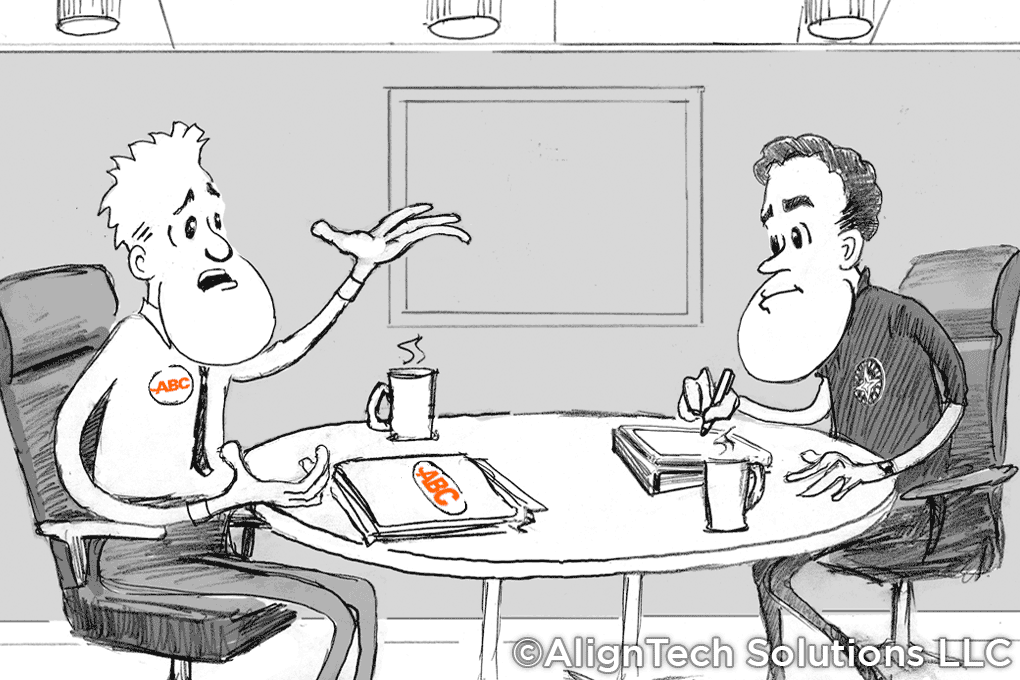
With so many illustration styles ranging from simple cartoons to highly-detailed realism, what will have the most appeal to your audience? Each style can evoke a different emotional reaction.
Illustration Styles in Greatest Use Today
Here are five of the most popular styles along with some commentary to help you in making choices for including in your own publications and marketing materials.
Cartoons
Cartoons make people smile. In business and editorial applications, they can break through demographic barriers and connect with just about anyone. A smiling cartoon frog is not going to be limited in its appeal to any gender, ethnic, or age group. Ask any purple dinosaur. Sometimes called a spot drawing, a cartoon is easy to insert into an article at a small size. Besides catching the reader’s eye, it visually communicates the meaning of the text while also breaking the article into reader-friendly sections.
When it comes to choosing something other than photography, a cartoon (see example at top) is often the first thing that comes to mind. As we’ll see, cartoons are not the only choice.
Realistic
An artist will often be praised in this way:
“He can draw something and make it look just like a photo!”
A photo-realistic painting or drawing is sure to get some oohs and ahhs. And with today’s computer-aided tools, there seems to be no limit to the amount of realism we can achieve. So the question becomes “Why not just use a photo?“. That question is valid if the illustrator doesn’t make the subject INTERESTING enough to invite a closer look…
- Portray something impossible in a realistic style, as in fantasy art.
- Idealize the subject, with perfected features and enhanced colors.
- Know when enough is enough: Leave no doubt that it is art and not photography. Give it some personality, or even deliberate imperfection.
Why try to copy a photo?
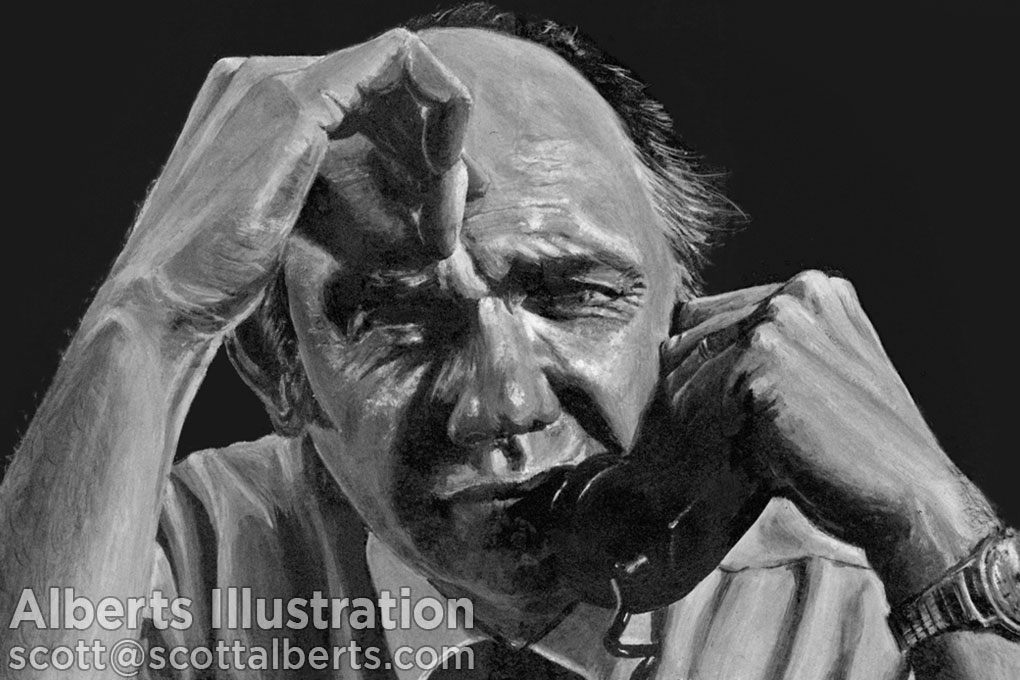 Example of a Realistic Illustration Style.
Example of a Realistic Illustration Style.
Pen and Ink
My personal favorite. Can be simple line art, but can also feature rich detail. A detailed ink drawing is interesting to look at, because the closer you look, the more you find. Some of the most intricate and “realistic” work in this style is actually quite abstract. Abstract and real at the same time. What appears to be a tedious rendering of fish scales, for example, is really an “abstraction” — a pattern of light and dark that captures the texture or character of the subject with lines and dots. So much more interesting to look at than a photo.
This kind of art can also save money, as it can appear in primarily black-and-white outlets such as newspapers and books. It can also be reproduced on shirts and promotional items where color is a technical concern. And it is flexible because it is easily colorized. Most of my own illustration work is in pen and ink, with color added by either watercolors or digital overlays on the computer.
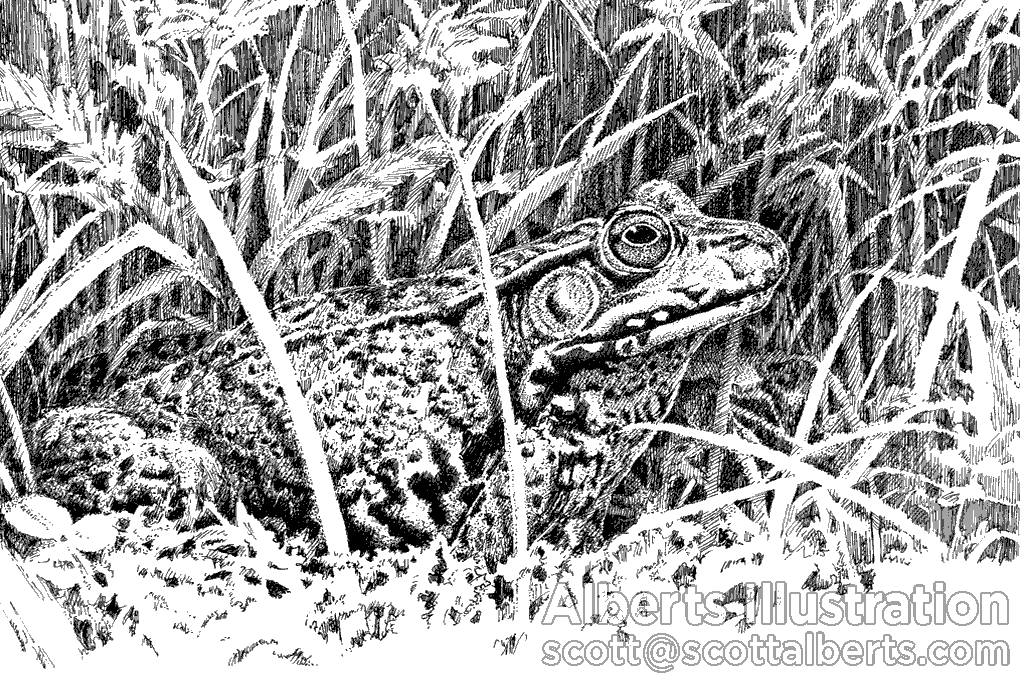 Example of a Pen and Ink Illustration Style.
Example of a Pen and Ink Illustration Style.
Technical
Serious, complex. The illustrator can take a complex subject such as a machine or the human anatomy and make it understandable with a single image or series of images. This is where we see a cross-section of a jet engine, or a living cell. Something impossible to photograph — but then, that’s what an illustrator is for!
This type of illustration can cost more, as it takes not only research and collaboration with the expert (you) but also involves more detail and more hours of work.
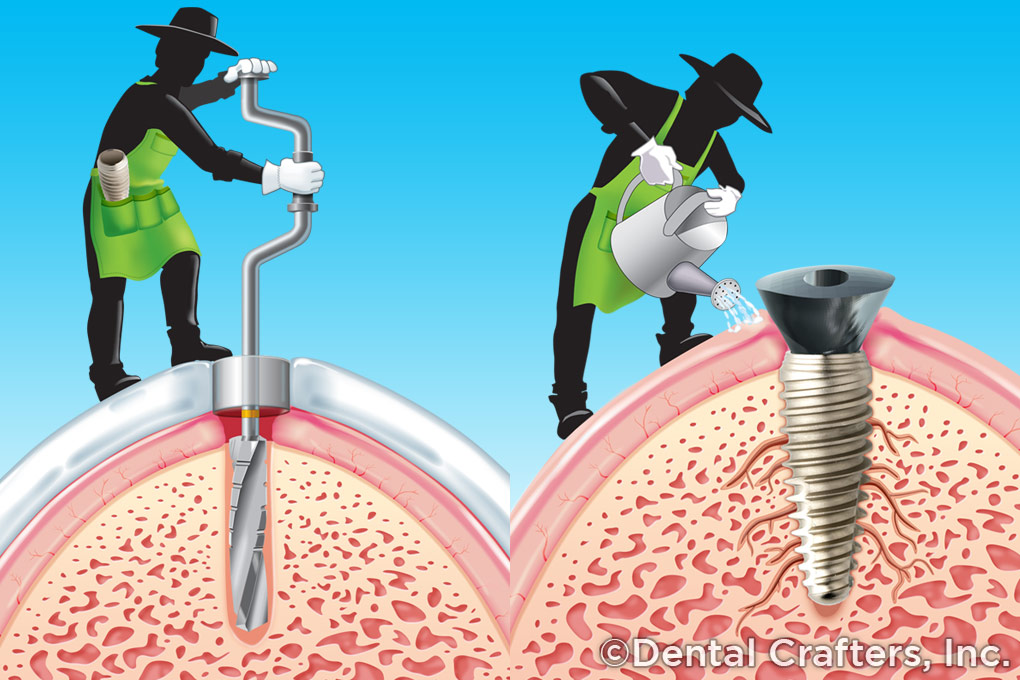 Example of a Technical Illustration Style.
Example of a Technical Illustration Style.
Digital
This art can range from cartoon styles to photo-realistic effects, and everything in between. The clean look of digitally-produced art can imply that you are a larger company, OR it can come across as clipart. It’s great if it’s an image custom-created to fit your own brand. I have found it sometimes difficult to add texture or “personality” to art that BEGINS on the computer. I will always start with pencil sketches, and then scan my own drawing to the computer for the digital treatment. Even for art purists like myself, it’s okay to trace if you’re tracing your own drawing!
By “digital” my primary meaning is “created on the computer” as opposed to hand-drawn or -painted with traditional art materials. However, as a customer, you should always ask for “digital versions” of any art — the wider use of the term simply means that it has been converted (usually by scanning) into a file that is easily used in your materials, stored, shared and modified. Even one-time portraits and fine art should be scanned or professionally photographed to ensure a backup copy (and something to show off on Facebook).
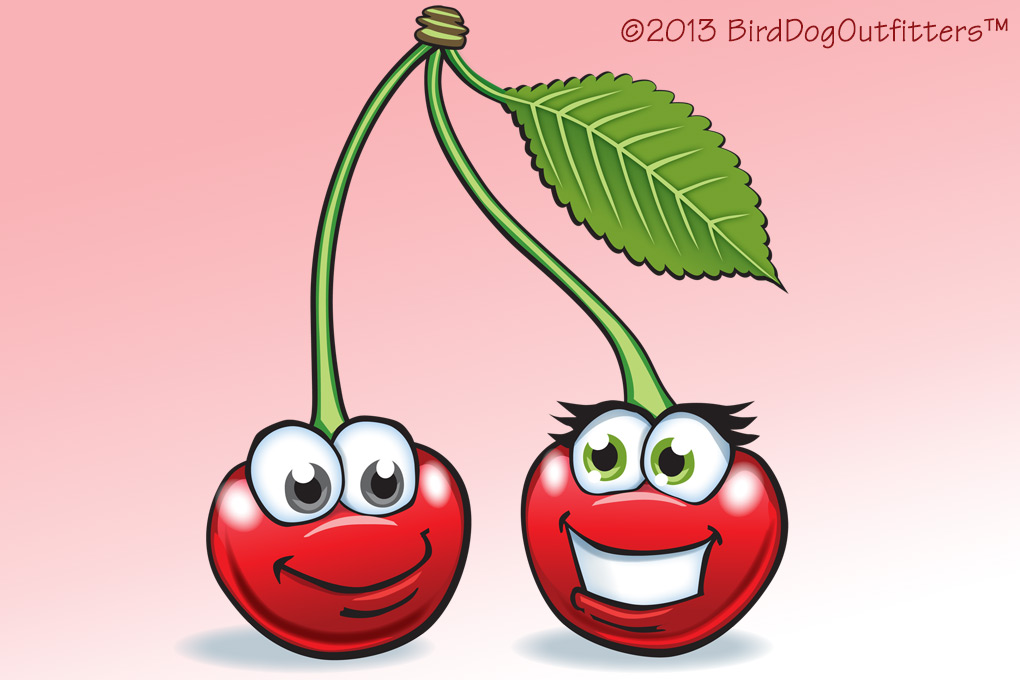 Example of a Digital Illustration Style.
Example of a Digital Illustration Style.
Creating Appeal and Understanding
One thing common to all of these styles: They get ATTENTION, and invite a viewer to stay around to read/listen to what you are saying.